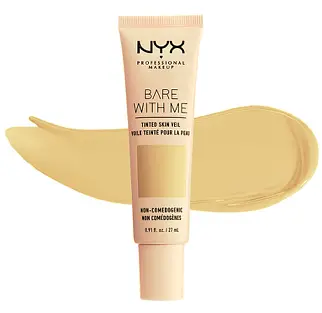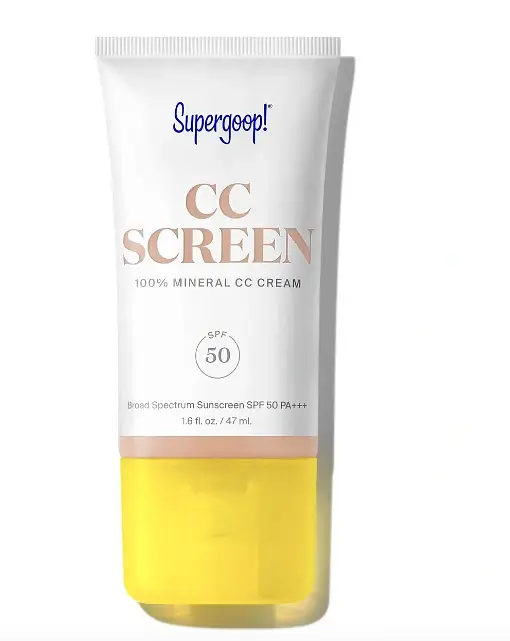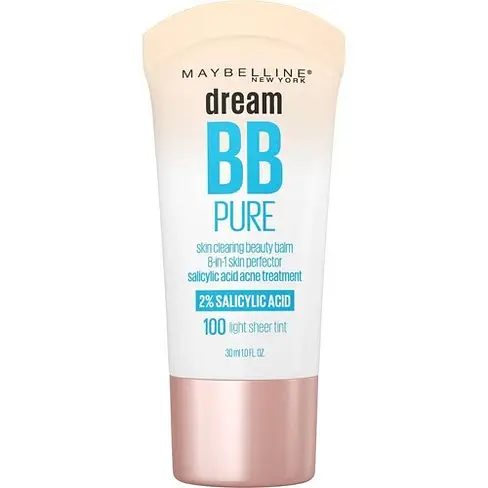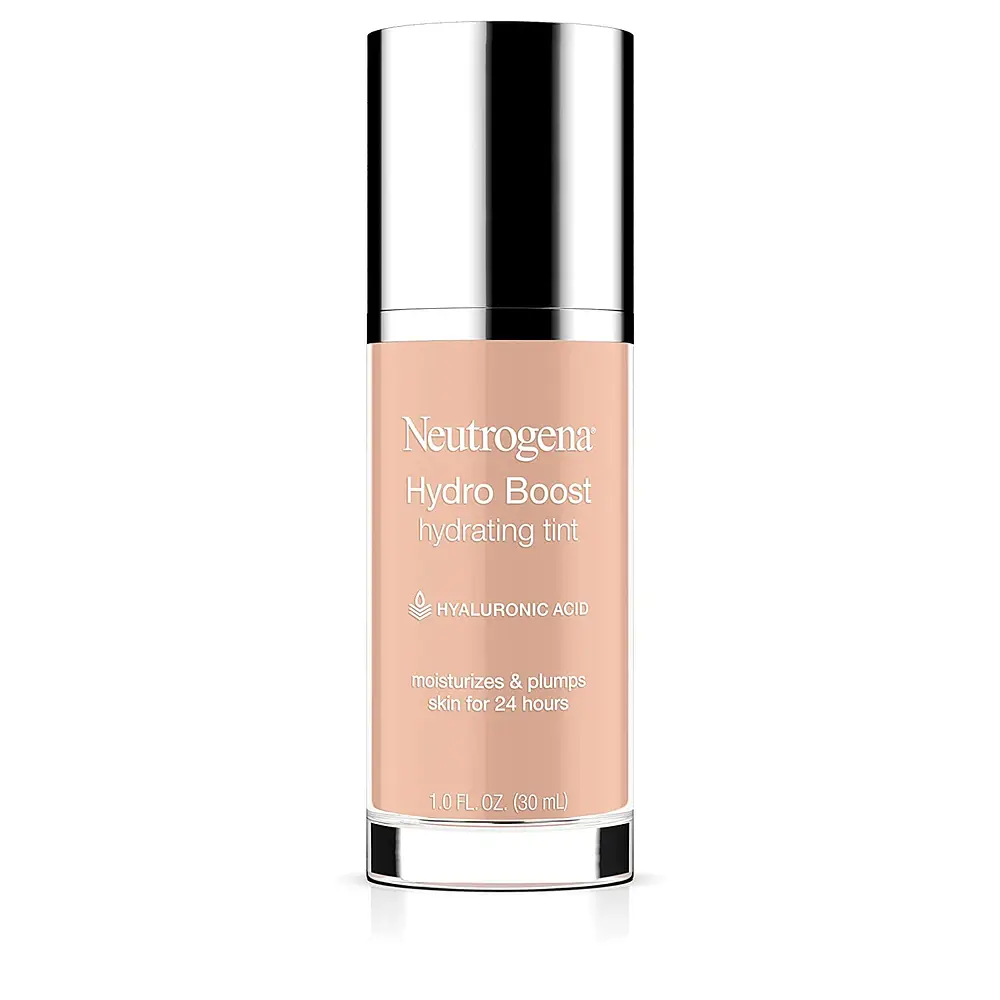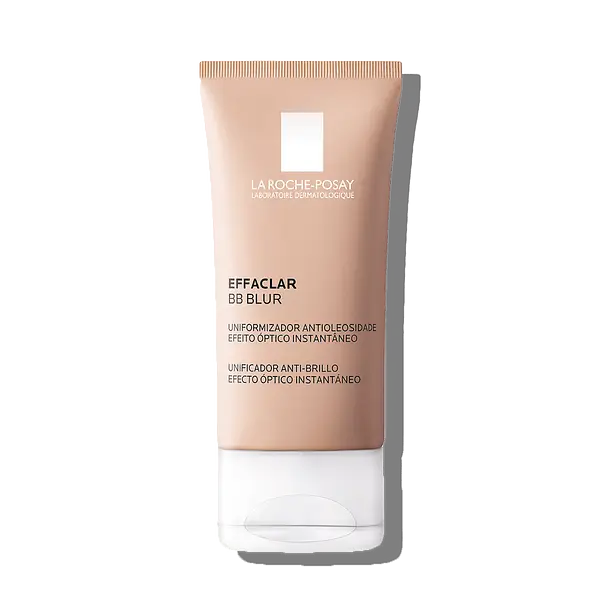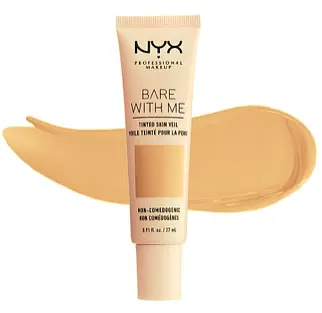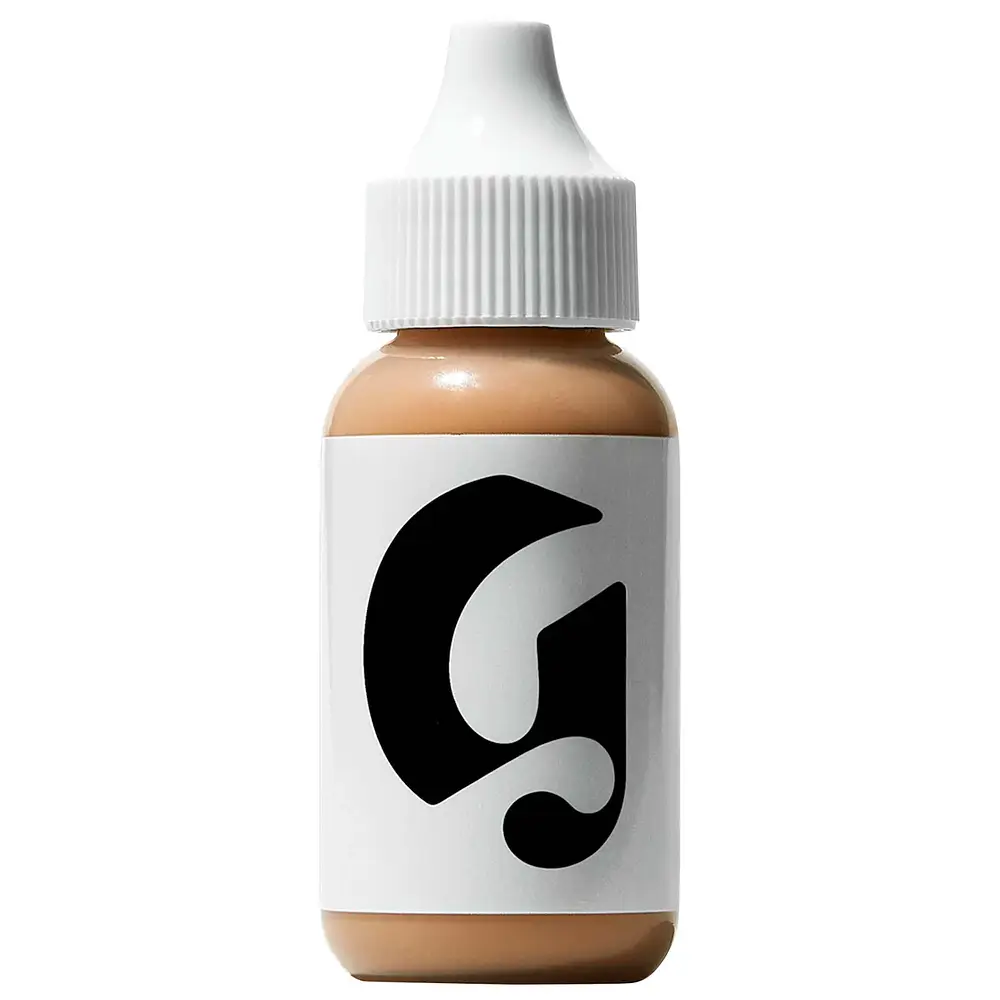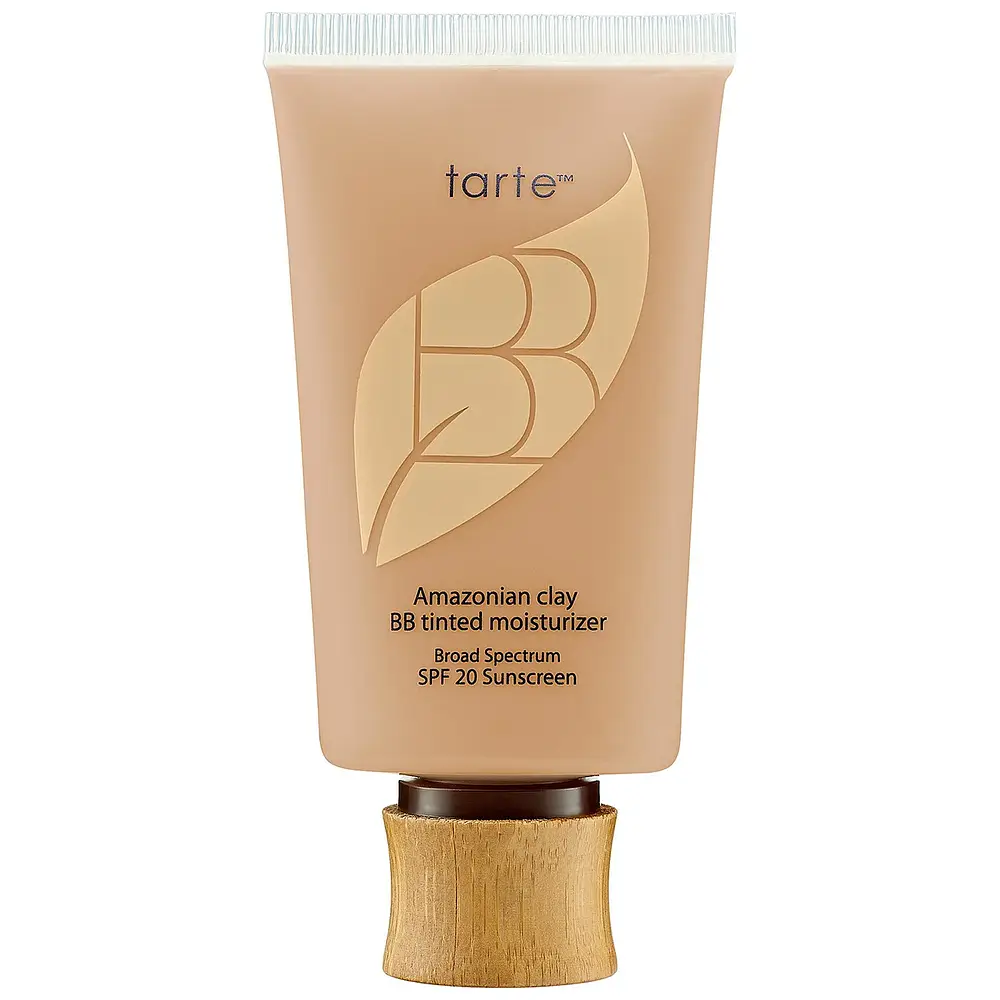Products Scan Our science '%20fill='black'/%3e%3c/svg%3e)
Skincare 
Bath & Body 
Make up 
Trending 
Skincare
Moisturizers
Treatments
Cleansers
Eye Care
Bath & Body
Make up
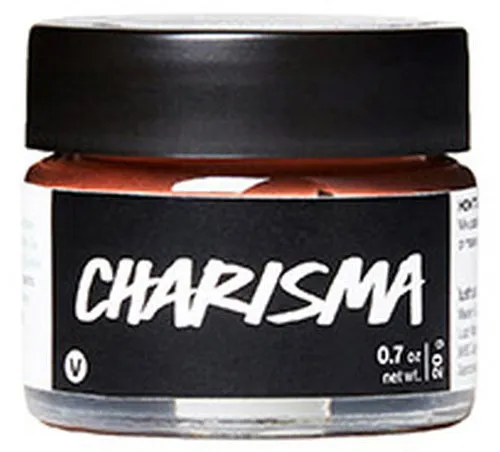
According to CreamScan analysis, Lush Charisma is quite moisturizing, with a moisturizing rating of 5.0 out of 10.
Is it more humectant or occlusive? Rather occlusive. It has a moderate humectancy of 3.0 out of 10, solely because of the significant content of Glycerin (est. ≈3.0%), and a high occlusivity of 6.9 out of 10, primarily due to the substantial concentration of Prunus Amygdalus Dulcis (Sweet Almond) Oil (est. ≈6.0%) and Theobroma Cacao (Cocoa) Seed Butter (est. ≈4.0%).
This type of product, when used as a standalone moisturizer, may provide a significant level of occlusive hydration that is adequate for normal to dry skin.
The occlusive profile of Lush Charisma suggests a texture that is rich and creamy but not overly thick, offering the potential to absorb into the skin without leaving a greasy afterfeel in most cases.
Please refer to the Ratings section below for details of the moisturizing rating calculation.
Based on the ingredient list analysis, Lush Charisma is rich (> 5%) in soothing ingredients, particularly Avena Sativa (Oat) Meal Extract (est. ≈70.0%).
When applied to the skin, compounds of soothing ingredients, such as triglycerides, phospholipids, fatty acids, phenolic compounds, and antioxidants, work together to soothe the skin through various mechanisms: reducing inflammation, promoting wound healing, repairing the skin barrier, and providing antimicrobial and antioxidant activities.
📌 Please note that this is not a complete list of benefits. We are in the process of enhancing our AI model to incorporate anti-pigmentation, exfoliation and anti-acne ratings.
An ideal moisturizer for any skin type should balance the right level of occlusivity (depending on skin type) with a significant amount of humectants, while Lush Charisma contains a relatively low level of humectants.
People with normal to dry skin would definitely benefit from adding more humectants to their moisturizing routine beyond what this product offers. If this is your only moisturizer, it may be worth including a humectant-rich product, such as a serum, in your skincare routine.
|
Est. %
The Estimated % is our algorithm-based assumption about an ingredient's concentration in a formula. Learn more The Estimated % is our algorithm-based assumption about an ingredient's concentration in a formula. Learn more | Ingredient | Origin | Functions | |
|---|---|---|---|---|
| 70 | | Botanical Ingredients derived from plants, mosses, and lichens: extracts, oils, powders, juices and other types of processed plant materials. Botanical Ingredients derived from plants, mosses, and lichens: extracts, oils, powders, juices and other types of processed plant materials. | Soothing Soothing ingredients reduce the signs of sensitivity in irritated and inflamed skin. This includes anti-inflammatory ingredients, anti-itch agents, and topical analgesics. Soothing Soothing ingredients reduce the signs of sensitivity in irritated and inflamed skin. This includes anti-inflammatory ingredients, anti-itch agents, and topical analgesics. | |
| 9 | | Botanical Ingredients derived from plants, mosses, and lichens: extracts, oils, powders, juices and other types of processed plant materials. Botanical Ingredients derived from plants, mosses, and lichens: extracts, oils, powders, juices and other types of processed plant materials. | Fragrance Fragrance ingredients add scent to a product or hide ('mask') the undesired aroma of other ingredients. Fragrance Fragrance ingredients add scent to a product or hide ('mask') the undesired aroma of other ingredients. | |
| 6 | Prunus Amygdalus Dulcis (Sweet Almond) Oil  An emollient and occlusive oil derived from sweet almonds. It has a favorable fatty acid composition (mainly oleic and linoleic acids), and a high content of vitamin E. Almond oil is listed as a common comedogenic ingredient by acne.org. Prunus Amygdalus Dulcis (Sweet Almond) Oil  An emollient and occlusive oil derived from sweet almonds. It has a favorable fatty acid composition (mainly oleic and linoleic acids), and a high content of vitamin E. Almond oil is listed as a common comedogenic ingredient by acne.org. | Botanical Ingredients derived from plants, mosses, and lichens: extracts, oils, powders, juices and other types of processed plant materials. Botanical Ingredients derived from plants, mosses, and lichens: extracts, oils, powders, juices and other types of processed plant materials. | Moisturizing (Occlusive), Occlusives are moisturizing ingredients that seal moisture into the skin, forming a water-resistant barrier. Moisturizing (Occlusive), Occlusives are moisturizing ingredients that seal moisture into the skin, forming a water-resistant barrier. Emollient, Emollients fill the micro-cracks in the skin and leave it feeling soft and pleasant to the touch. Emollients are often mistakenly perceived as moisturizing ingredients. Emollient, Emollients fill the micro-cracks in the skin and leave it feeling soft and pleasant to the touch. Emollients are often mistakenly perceived as moisturizing ingredients. Fragrance Fragrance ingredients add scent to a product or hide ('mask') the undesired aroma of other ingredients. Fragrance Fragrance ingredients add scent to a product or hide ('mask') the undesired aroma of other ingredients. | |
| 4 | Theobroma Cacao (Cocoa) Seed Butter  Also known as cocoa seed butter, it is a popular emollient and occlusive moisturizer. Skincare products with cocoa butter as their main ingredient have a sweet, chocolatey scent. Cocoa butter is listed as a common comedogenic ingredient by acne.org. Theobroma Cacao (Cocoa) Seed Butter  Also known as cocoa seed butter, it is a popular emollient and occlusive moisturizer. Skincare products with cocoa butter as their main ingredient have a sweet, chocolatey scent. Cocoa butter is listed as a common comedogenic ingredient by acne.org. | Botanical Ingredients derived from plants, mosses, and lichens: extracts, oils, powders, juices and other types of processed plant materials. Botanical Ingredients derived from plants, mosses, and lichens: extracts, oils, powders, juices and other types of processed plant materials. | Moisturizing (Occlusive), Occlusives are moisturizing ingredients that seal moisture into the skin, forming a water-resistant barrier. Moisturizing (Occlusive), Occlusives are moisturizing ingredients that seal moisture into the skin, forming a water-resistant barrier. Emollient, Emollients fill the micro-cracks in the skin and leave it feeling soft and pleasant to the touch. Emollients are often mistakenly perceived as moisturizing ingredients. Emollient, Emollients fill the micro-cracks in the skin and leave it feeling soft and pleasant to the touch. Emollients are often mistakenly perceived as moisturizing ingredients. Fragrance Fragrance ingredients add scent to a product or hide ('mask') the undesired aroma of other ingredients. Fragrance Fragrance ingredients add scent to a product or hide ('mask') the undesired aroma of other ingredients. | |
| 3 | Glycerin  The most popular moisturizing ingredient in the world. It is a powerful humectant – cheap yet very effective. Glycerin  The most popular moisturizing ingredient in the world. It is a powerful humectant – cheap yet very effective. | Botanical, Ingredients derived from plants, mosses, and lichens: extracts, oils, powders, juices and other types of processed plant materials. Botanical, Ingredients derived from plants, mosses, and lichens: extracts, oils, powders, juices and other types of processed plant materials. Synthetic, All kinds of ingredients formulated or produced by a chemical process, or those that have a chemical modification in their structure. Synthetic, All kinds of ingredients formulated or produced by a chemical process, or those that have a chemical modification in their structure. Animal Ingredients derived from animals (including birds, fish, crustaceans, mollusks, and insects) or produced by animals (e.g. dairy- and egg-derived ingredients, bee products, silk, pearls, etc.) Animal Ingredients derived from animals (including birds, fish, crustaceans, mollusks, and insects) or produced by animals (e.g. dairy- and egg-derived ingredients, bee products, silk, pearls, etc.) | Moisturizing (Humectant), Humectants are moisturizing ingredients that draw moisture to the skin, either from deeper layers or from the environment (when it's humid). Moisturizing (Humectant), Humectants are moisturizing ingredients that draw moisture to the skin, either from deeper layers or from the environment (when it's humid). Emollient, Emollients fill the micro-cracks in the skin and leave it feeling soft and pleasant to the touch. Emollients are often mistakenly perceived as moisturizing ingredients. Emollient, Emollients fill the micro-cracks in the skin and leave it feeling soft and pleasant to the touch. Emollients are often mistakenly perceived as moisturizing ingredients. Fragrance, Fragrance ingredients add scent to a product or hide ('mask') the undesired aroma of other ingredients. Fragrance, Fragrance ingredients add scent to a product or hide ('mask') the undesired aroma of other ingredients. Formula helper
Formula helper
| |
| 2.5 | Stearic Acid  A saturated fatty acid found in vegetable butter and animal fats. It is an occlusive moisturizing and emollient ingredient and also helps to maintain the barrier function of the skin. Stearic Acid  A saturated fatty acid found in vegetable butter and animal fats. It is an occlusive moisturizing and emollient ingredient and also helps to maintain the barrier function of the skin. | Botanical, Ingredients derived from plants, mosses, and lichens: extracts, oils, powders, juices and other types of processed plant materials. Botanical, Ingredients derived from plants, mosses, and lichens: extracts, oils, powders, juices and other types of processed plant materials. Synthetic, All kinds of ingredients formulated or produced by a chemical process, or those that have a chemical modification in their structure. Synthetic, All kinds of ingredients formulated or produced by a chemical process, or those that have a chemical modification in their structure. Animal Ingredients derived from animals (including birds, fish, crustaceans, mollusks, and insects) or produced by animals (e.g. dairy- and egg-derived ingredients, bee products, silk, pearls, etc.) Animal Ingredients derived from animals (including birds, fish, crustaceans, mollusks, and insects) or produced by animals (e.g. dairy- and egg-derived ingredients, bee products, silk, pearls, etc.) | Moisturizing (Occlusive), Occlusives are moisturizing ingredients that seal moisture into the skin, forming a water-resistant barrier. Moisturizing (Occlusive), Occlusives are moisturizing ingredients that seal moisture into the skin, forming a water-resistant barrier. Barrier Repair, Barrier repair ingredients help to restore the healthy function of the skin’s lipid barrier. Barrier Repair, Barrier repair ingredients help to restore the healthy function of the skin’s lipid barrier. Emollient, Emollients fill the micro-cracks in the skin and leave it feeling soft and pleasant to the touch. Emollients are often mistakenly perceived as moisturizing ingredients. Emollient, Emollients fill the micro-cracks in the skin and leave it feeling soft and pleasant to the touch. Emollients are often mistakenly perceived as moisturizing ingredients. Cleansing, Cleansing ingredients, also known as surfactants, clear dirt and buildup from the skin. Cleansing, Cleansing ingredients, also known as surfactants, clear dirt and buildup from the skin. Fragrance, Fragrance ingredients add scent to a product or hide ('mask') the undesired aroma of other ingredients. Fragrance, Fragrance ingredients add scent to a product or hide ('mask') the undesired aroma of other ingredients. Formula helper
Formula helper
| |
| 2 | Synthetic Fluorphlogopite  Also known as synthetic mica, this ingredient’s best property is its ability to form thin, sheet-like crystals. This gives products (mostly makeup) great slip. Synthetic Fluorphlogopite  Also known as synthetic mica, this ingredient’s best property is its ability to form thin, sheet-like crystals. This gives products (mostly makeup) great slip. | Synthetic All kinds of ingredients formulated or produced by a chemical process, or those that have a chemical modification in their structure. Synthetic All kinds of ingredients formulated or produced by a chemical process, or those that have a chemical modification in their structure. | Formula helper
Formula helper
| |
| 1.5 | Triethanolamine  A clear, colorless, and highly viscous liquid, this ingredient is an excellent pH adjuster. When it is necessary to neutralize an acidic solution or to generally increase the pH of a product, triethanolamine is a common choice. Triethanolamine  A clear, colorless, and highly viscous liquid, this ingredient is an excellent pH adjuster. When it is necessary to neutralize an acidic solution or to generally increase the pH of a product, triethanolamine is a common choice. | Synthetic All kinds of ingredients formulated or produced by a chemical process, or those that have a chemical modification in their structure. Synthetic All kinds of ingredients formulated or produced by a chemical process, or those that have a chemical modification in their structure. | Fragrance, Fragrance ingredients add scent to a product or hide ('mask') the undesired aroma of other ingredients. Fragrance, Fragrance ingredients add scent to a product or hide ('mask') the undesired aroma of other ingredients. Formula helper
Formula helper
| |
| 1.3 | Simmondsia Chinensis (Jojoba) Seed Oil  A liquid plant wax, also known as Jojoba oil, pressed from the seeds of Simmondsia chinensis. These seeds can contain up to 50% of liquid wax. It is used as an occlusive moisturizer, emollient, and emulsifier. Simmondsia Chinensis (Jojoba) Seed Oil  A liquid plant wax, also known as Jojoba oil, pressed from the seeds of Simmondsia chinensis. These seeds can contain up to 50% of liquid wax. It is used as an occlusive moisturizer, emollient, and emulsifier. | Botanical Ingredients derived from plants, mosses, and lichens: extracts, oils, powders, juices and other types of processed plant materials. Botanical Ingredients derived from plants, mosses, and lichens: extracts, oils, powders, juices and other types of processed plant materials. | Moisturizing (Occlusive), Occlusives are moisturizing ingredients that seal moisture into the skin, forming a water-resistant barrier. Moisturizing (Occlusive), Occlusives are moisturizing ingredients that seal moisture into the skin, forming a water-resistant barrier. Emollient Emollients fill the micro-cracks in the skin and leave it feeling soft and pleasant to the touch. Emollients are often mistakenly perceived as moisturizing ingredients. Emollient Emollients fill the micro-cracks in the skin and leave it feeling soft and pleasant to the touch. Emollients are often mistakenly perceived as moisturizing ingredients. | |
| 1 | Titanium Dioxide (CI 77891)  One of two the most commonly used mineral sunscreens. It can absorb UV light, including UVB – which causes burning, tanning, and even skin cancer. Also used as a colorant, titanium dioxide gives a product a bright white color. Titanium Dioxide (CI 77891)  One of two the most commonly used mineral sunscreens. It can absorb UV light, including UVB – which causes burning, tanning, and even skin cancer. Also used as a colorant, titanium dioxide gives a product a bright white color. | Naturally occurring These are ingredients initially present in nature, such as elements (Zinc, Gold, or Silver), minerals, or water. Naturally occurring These are ingredients initially present in nature, such as elements (Zinc, Gold, or Silver), minerals, or water. | Sunscreen, Sunscreens protect the skin from harmful ultraviolet (UV) radiation by absorbing or reflecting UV light. Sunscreen, Sunscreens protect the skin from harmful ultraviolet (UV) radiation by absorbing or reflecting UV light. Colorant, Colorants give color to skincare products. Colorant, Colorants give color to skincare products. Formula helper
Formula helper
| |
| 0.3 | Cetearyl Alcohol  A blend of cetyl alcohol and stearyl alcohol, the fatty alcohols that are derived from palm oil. It helps to create emulsions that give off a soft and silky emollient feel and also increase product thickness. Cetearyl Alcohol  A blend of cetyl alcohol and stearyl alcohol, the fatty alcohols that are derived from palm oil. It helps to create emulsions that give off a soft and silky emollient feel and also increase product thickness. | Botanical, Ingredients derived from plants, mosses, and lichens: extracts, oils, powders, juices and other types of processed plant materials. Botanical, Ingredients derived from plants, mosses, and lichens: extracts, oils, powders, juices and other types of processed plant materials. Synthetic All kinds of ingredients formulated or produced by a chemical process, or those that have a chemical modification in their structure. Synthetic All kinds of ingredients formulated or produced by a chemical process, or those that have a chemical modification in their structure. | Emollient, Emollients fill the micro-cracks in the skin and leave it feeling soft and pleasant to the touch. Emollients are often mistakenly perceived as moisturizing ingredients. Emollient, Emollients fill the micro-cracks in the skin and leave it feeling soft and pleasant to the touch. Emollients are often mistakenly perceived as moisturizing ingredients. Formula helper
Formula helper
| |
| 0.3 | Tin Oxide  A multi-functional mineral that increases the physical space a product takes up, increases the viscosity of liquid products, and, when used as an opacifying agent, makes a transparent or translucent product become opaque or solid in color. Tin Oxide  A multi-functional mineral that increases the physical space a product takes up, increases the viscosity of liquid products, and, when used as an opacifying agent, makes a transparent or translucent product become opaque or solid in color. | Naturally occurring, These are ingredients initially present in nature, such as elements (Zinc, Gold, or Silver), minerals, or water. Naturally occurring, These are ingredients initially present in nature, such as elements (Zinc, Gold, or Silver), minerals, or water. Synthetic All kinds of ingredients formulated or produced by a chemical process, or those that have a chemical modification in their structure. Synthetic All kinds of ingredients formulated or produced by a chemical process, or those that have a chemical modification in their structure. | Abrasive, Abrasives 'physically' exfoliate the skin (i.e., manually remove dead skin cells) by rubbing against its surface. Abrasive, Abrasives 'physically' exfoliate the skin (i.e., manually remove dead skin cells) by rubbing against its surface. Formula helper
Formula helper
| |
| 0.3 | Iron Oxides  Mineral pigments used to provide color in skincare products. These naturally occurring pigments are available in yellow, red, brown, and black powders. Iron Oxides  Mineral pigments used to provide color in skincare products. These naturally occurring pigments are available in yellow, red, brown, and black powders. | Naturally occurring, These are ingredients initially present in nature, such as elements (Zinc, Gold, or Silver), minerals, or water. Naturally occurring, These are ingredients initially present in nature, such as elements (Zinc, Gold, or Silver), minerals, or water. Synthetic All kinds of ingredients formulated or produced by a chemical process, or those that have a chemical modification in their structure. Synthetic All kinds of ingredients formulated or produced by a chemical process, or those that have a chemical modification in their structure. | Colorant Colorants give color to skincare products. Colorant Colorants give color to skincare products. | |
| 0.3 | Methylparaben  A preservative that keeps a product unspoiled. There has been a lot of controversy surrounding parabens, although the concentrations found in cosmetic formulations are generally considered to be safe. Methylparaben  A preservative that keeps a product unspoiled. There has been a lot of controversy surrounding parabens, although the concentrations found in cosmetic formulations are generally considered to be safe. | Synthetic All kinds of ingredients formulated or produced by a chemical process, or those that have a chemical modification in their structure. Synthetic All kinds of ingredients formulated or produced by a chemical process, or those that have a chemical modification in their structure. | Antimicrobial, Antimicrobials prevent the growth of harmful microorganisms on the skin. Antimicrobial, Antimicrobials prevent the growth of harmful microorganisms on the skin. Fragrance, Fragrance ingredients add scent to a product or hide ('mask') the undesired aroma of other ingredients. Fragrance, Fragrance ingredients add scent to a product or hide ('mask') the undesired aroma of other ingredients. Preservative Preservatives prevent the growth of bacteria and fungi in a product. Preservative Preservatives prevent the growth of bacteria and fungi in a product. | |
| 0.3 | Propylparaben  A preservative that keeps a product unspoiled. There has been a lot of controversy surrounding parabens, although the concentrations found in cosmetic formulations are generally considered to be safe. Propylparaben  A preservative that keeps a product unspoiled. There has been a lot of controversy surrounding parabens, although the concentrations found in cosmetic formulations are generally considered to be safe. | Synthetic All kinds of ingredients formulated or produced by a chemical process, or those that have a chemical modification in their structure. Synthetic All kinds of ingredients formulated or produced by a chemical process, or those that have a chemical modification in their structure. | Antimicrobial, Antimicrobials prevent the growth of harmful microorganisms on the skin. Antimicrobial, Antimicrobials prevent the growth of harmful microorganisms on the skin. Fragrance, Fragrance ingredients add scent to a product or hide ('mask') the undesired aroma of other ingredients. Fragrance, Fragrance ingredients add scent to a product or hide ('mask') the undesired aroma of other ingredients. Preservative Preservatives prevent the growth of bacteria and fungi in a product. Preservative Preservatives prevent the growth of bacteria and fungi in a product. | |
| 70  Avena Sativa (Oat) Meal Extract Function: Soothing Soothing Soothing ingredients reduce the signs of sensitivity in irritated and inflamed skin. This includes anti-inflammatory ingredients, anti-itch agents, and topical analgesics. Soothing Soothing Soothing ingredients reduce the signs of sensitivity in irritated and inflamed skin. This includes anti-inflammatory ingredients, anti-itch agents, and topical analgesics. Origin: Botanical Botanical Ingredients derived from plants, mosses, and lichens: extracts, oils, powders, juices and other types of processed plant materials. Botanical Botanical Ingredients derived from plants, mosses, and lichens: extracts, oils, powders, juices and other types of processed plant materials. |
| 9  Citrus Aurantium Amara (Bitter Orange) Flower Water Function: Fragrance Fragrance Fragrance ingredients add scent to a product or hide ('mask') the undesired aroma of other ingredients. Fragrance Fragrance Fragrance ingredients add scent to a product or hide ('mask') the undesired aroma of other ingredients. Origin: Botanical Botanical Ingredients derived from plants, mosses, and lichens: extracts, oils, powders, juices and other types of processed plant materials. Botanical Botanical Ingredients derived from plants, mosses, and lichens: extracts, oils, powders, juices and other types of processed plant materials. |
| 6  Prunus Amygdalus Dulcis (Sweet Almond) Oil Function: Moisturizing (Occlusive), Moisturizing (Occlusive) Occlusives are moisturizing ingredients that seal moisture into the skin, forming a water-resistant barrier. Moisturizing (Occlusive), Moisturizing (Occlusive) Occlusives are moisturizing ingredients that seal moisture into the skin, forming a water-resistant barrier. Emollient, Emollient Emollients fill the micro-cracks in the skin and leave it feeling soft and pleasant to the touch. Emollients are often mistakenly perceived as moisturizing ingredients. Emollient, Emollient Emollients fill the micro-cracks in the skin and leave it feeling soft and pleasant to the touch. Emollients are often mistakenly perceived as moisturizing ingredients. Fragrance Fragrance Fragrance ingredients add scent to a product or hide ('mask') the undesired aroma of other ingredients. Fragrance Fragrance Fragrance ingredients add scent to a product or hide ('mask') the undesired aroma of other ingredients. Origin: Botanical Botanical Ingredients derived from plants, mosses, and lichens: extracts, oils, powders, juices and other types of processed plant materials. Botanical Botanical Ingredients derived from plants, mosses, and lichens: extracts, oils, powders, juices and other types of processed plant materials. |
| 4  Theobroma Cacao (Cocoa) Seed Butter Function: Moisturizing (Occlusive), Moisturizing (Occlusive) Occlusives are moisturizing ingredients that seal moisture into the skin, forming a water-resistant barrier. Moisturizing (Occlusive), Moisturizing (Occlusive) Occlusives are moisturizing ingredients that seal moisture into the skin, forming a water-resistant barrier. Emollient, Emollient Emollients fill the micro-cracks in the skin and leave it feeling soft and pleasant to the touch. Emollients are often mistakenly perceived as moisturizing ingredients. Emollient, Emollient Emollients fill the micro-cracks in the skin and leave it feeling soft and pleasant to the touch. Emollients are often mistakenly perceived as moisturizing ingredients. Fragrance Fragrance Fragrance ingredients add scent to a product or hide ('mask') the undesired aroma of other ingredients. Fragrance Fragrance Fragrance ingredients add scent to a product or hide ('mask') the undesired aroma of other ingredients. Origin: Botanical Botanical Ingredients derived from plants, mosses, and lichens: extracts, oils, powders, juices and other types of processed plant materials. Botanical Botanical Ingredients derived from plants, mosses, and lichens: extracts, oils, powders, juices and other types of processed plant materials. |
| 3  Glycerin Function: Moisturizing (Humectant), Moisturizing (Humectant) Humectants are moisturizing ingredients that draw moisture to the skin, either from deeper layers or from the environment (when it's humid). Moisturizing (Humectant), Moisturizing (Humectant) Humectants are moisturizing ingredients that draw moisture to the skin, either from deeper layers or from the environment (when it's humid). Emollient, Emollient Emollients fill the micro-cracks in the skin and leave it feeling soft and pleasant to the touch. Emollients are often mistakenly perceived as moisturizing ingredients. Emollient, Emollient Emollients fill the micro-cracks in the skin and leave it feeling soft and pleasant to the touch. Emollients are often mistakenly perceived as moisturizing ingredients. Fragrance, Fragrance Fragrance ingredients add scent to a product or hide ('mask') the undesired aroma of other ingredients. Fragrance, Fragrance Fragrance ingredients add scent to a product or hide ('mask') the undesired aroma of other ingredients. Formula helper Formula helper
Formula helper Formula helper
Origin: Botanical, Botanical Ingredients derived from plants, mosses, and lichens: extracts, oils, powders, juices and other types of processed plant materials. Botanical, Botanical Ingredients derived from plants, mosses, and lichens: extracts, oils, powders, juices and other types of processed plant materials. Synthetic, Synthetic All kinds of ingredients formulated or produced by a chemical process, or those that have a chemical modification in their structure. Synthetic, Synthetic All kinds of ingredients formulated or produced by a chemical process, or those that have a chemical modification in their structure. Animal Animal Ingredients derived from animals (including birds, fish, crustaceans, mollusks, and insects) or produced by animals (e.g. dairy- and egg-derived ingredients, bee products, silk, pearls, etc.) Animal Animal Ingredients derived from animals (including birds, fish, crustaceans, mollusks, and insects) or produced by animals (e.g. dairy- and egg-derived ingredients, bee products, silk, pearls, etc.) |
| 2.5  Stearic Acid Function: Moisturizing (Occlusive), Moisturizing (Occlusive) Occlusives are moisturizing ingredients that seal moisture into the skin, forming a water-resistant barrier. Moisturizing (Occlusive), Moisturizing (Occlusive) Occlusives are moisturizing ingredients that seal moisture into the skin, forming a water-resistant barrier. Barrier Repair, Barrier Repair Barrier repair ingredients help to restore the healthy function of the skin’s lipid barrier. Barrier Repair, Barrier Repair Barrier repair ingredients help to restore the healthy function of the skin’s lipid barrier. Emollient, Emollient Emollients fill the micro-cracks in the skin and leave it feeling soft and pleasant to the touch. Emollients are often mistakenly perceived as moisturizing ingredients. Emollient, Emollient Emollients fill the micro-cracks in the skin and leave it feeling soft and pleasant to the touch. Emollients are often mistakenly perceived as moisturizing ingredients. Cleansing, Cleansing Cleansing ingredients, also known as surfactants, clear dirt and buildup from the skin. Cleansing, Cleansing Cleansing ingredients, also known as surfactants, clear dirt and buildup from the skin. Fragrance, Fragrance Fragrance ingredients add scent to a product or hide ('mask') the undesired aroma of other ingredients. Fragrance, Fragrance Fragrance ingredients add scent to a product or hide ('mask') the undesired aroma of other ingredients. Formula helper Formula helper
Formula helper Formula helper
Origin: Botanical, Botanical Ingredients derived from plants, mosses, and lichens: extracts, oils, powders, juices and other types of processed plant materials. Botanical, Botanical Ingredients derived from plants, mosses, and lichens: extracts, oils, powders, juices and other types of processed plant materials. Synthetic, Synthetic All kinds of ingredients formulated or produced by a chemical process, or those that have a chemical modification in their structure. Synthetic, Synthetic All kinds of ingredients formulated or produced by a chemical process, or those that have a chemical modification in their structure. Animal Animal Ingredients derived from animals (including birds, fish, crustaceans, mollusks, and insects) or produced by animals (e.g. dairy- and egg-derived ingredients, bee products, silk, pearls, etc.) Animal Animal Ingredients derived from animals (including birds, fish, crustaceans, mollusks, and insects) or produced by animals (e.g. dairy- and egg-derived ingredients, bee products, silk, pearls, etc.) |
| 2  Synthetic Fluorphlogopite Function: Formula helper Formula helper
Formula helper Formula helper
Origin: Synthetic Synthetic All kinds of ingredients formulated or produced by a chemical process, or those that have a chemical modification in their structure. Synthetic Synthetic All kinds of ingredients formulated or produced by a chemical process, or those that have a chemical modification in their structure. |
| 1.5  Triethanolamine Function: Fragrance, Fragrance Fragrance ingredients add scent to a product or hide ('mask') the undesired aroma of other ingredients. Fragrance, Fragrance Fragrance ingredients add scent to a product or hide ('mask') the undesired aroma of other ingredients. Formula helper Formula helper
Formula helper Formula helper
Origin: Synthetic Synthetic All kinds of ingredients formulated or produced by a chemical process, or those that have a chemical modification in their structure. Synthetic Synthetic All kinds of ingredients formulated or produced by a chemical process, or those that have a chemical modification in their structure. |
| 1.3  Simmondsia Chinensis (Jojoba) Seed Oil Function: Moisturizing (Occlusive), Moisturizing (Occlusive) Occlusives are moisturizing ingredients that seal moisture into the skin, forming a water-resistant barrier. Moisturizing (Occlusive), Moisturizing (Occlusive) Occlusives are moisturizing ingredients that seal moisture into the skin, forming a water-resistant barrier. Emollient Emollient Emollients fill the micro-cracks in the skin and leave it feeling soft and pleasant to the touch. Emollients are often mistakenly perceived as moisturizing ingredients. Emollient Emollient Emollients fill the micro-cracks in the skin and leave it feeling soft and pleasant to the touch. Emollients are often mistakenly perceived as moisturizing ingredients. Origin: Botanical Botanical Ingredients derived from plants, mosses, and lichens: extracts, oils, powders, juices and other types of processed plant materials. Botanical Botanical Ingredients derived from plants, mosses, and lichens: extracts, oils, powders, juices and other types of processed plant materials. |
| 1  Titanium Dioxide (CI 77891) Function: Sunscreen, Sunscreen Sunscreens protect the skin from harmful ultraviolet (UV) radiation by absorbing or reflecting UV light. Sunscreen, Sunscreen Sunscreens protect the skin from harmful ultraviolet (UV) radiation by absorbing or reflecting UV light. Colorant, Colorant Colorants give color to skincare products. Colorant, Colorant Colorants give color to skincare products. Formula helper Formula helper
Formula helper Formula helper
Origin: Naturally occurring Naturally occurring These are ingredients initially present in nature, such as elements (Zinc, Gold, or Silver), minerals, or water. Naturally occurring Naturally occurring These are ingredients initially present in nature, such as elements (Zinc, Gold, or Silver), minerals, or water. |
| 0.3  Cetearyl Alcohol Function: Emollient, Emollient Emollients fill the micro-cracks in the skin and leave it feeling soft and pleasant to the touch. Emollients are often mistakenly perceived as moisturizing ingredients. Emollient, Emollient Emollients fill the micro-cracks in the skin and leave it feeling soft and pleasant to the touch. Emollients are often mistakenly perceived as moisturizing ingredients. Formula helper Formula helper
Formula helper Formula helper
Origin: Botanical, Botanical Ingredients derived from plants, mosses, and lichens: extracts, oils, powders, juices and other types of processed plant materials. Botanical, Botanical Ingredients derived from plants, mosses, and lichens: extracts, oils, powders, juices and other types of processed plant materials. Synthetic Synthetic All kinds of ingredients formulated or produced by a chemical process, or those that have a chemical modification in their structure. Synthetic Synthetic All kinds of ingredients formulated or produced by a chemical process, or those that have a chemical modification in their structure. |
| 0.3  Tin Oxide Function: Abrasive, Abrasive Abrasives 'physically' exfoliate the skin (i.e., manually remove dead skin cells) by rubbing against its surface. Abrasive, Abrasive Abrasives 'physically' exfoliate the skin (i.e., manually remove dead skin cells) by rubbing against its surface. Formula helper Formula helper
Formula helper Formula helper
Origin: Naturally occurring, Naturally occurring These are ingredients initially present in nature, such as elements (Zinc, Gold, or Silver), minerals, or water. Naturally occurring, Naturally occurring These are ingredients initially present in nature, such as elements (Zinc, Gold, or Silver), minerals, or water. Synthetic Synthetic All kinds of ingredients formulated or produced by a chemical process, or those that have a chemical modification in their structure. Synthetic Synthetic All kinds of ingredients formulated or produced by a chemical process, or those that have a chemical modification in their structure. |
| 0.3  Iron Oxides Function: Colorant Colorant Colorants give color to skincare products. Colorant Colorant Colorants give color to skincare products. Origin: Naturally occurring, Naturally occurring These are ingredients initially present in nature, such as elements (Zinc, Gold, or Silver), minerals, or water. Naturally occurring, Naturally occurring These are ingredients initially present in nature, such as elements (Zinc, Gold, or Silver), minerals, or water. Synthetic Synthetic All kinds of ingredients formulated or produced by a chemical process, or those that have a chemical modification in their structure. Synthetic Synthetic All kinds of ingredients formulated or produced by a chemical process, or those that have a chemical modification in their structure. |
| 0.3  Methylparaben Function: Antimicrobial, Antimicrobial Antimicrobials prevent the growth of harmful microorganisms on the skin. Antimicrobial, Antimicrobial Antimicrobials prevent the growth of harmful microorganisms on the skin. Fragrance, Fragrance Fragrance ingredients add scent to a product or hide ('mask') the undesired aroma of other ingredients. Fragrance, Fragrance Fragrance ingredients add scent to a product or hide ('mask') the undesired aroma of other ingredients. Preservative Preservative Preservatives prevent the growth of bacteria and fungi in a product. Preservative Preservative Preservatives prevent the growth of bacteria and fungi in a product. Origin: Synthetic Synthetic All kinds of ingredients formulated or produced by a chemical process, or those that have a chemical modification in their structure. Synthetic Synthetic All kinds of ingredients formulated or produced by a chemical process, or those that have a chemical modification in their structure. |
| 0.3  Propylparaben Function: Antimicrobial, Antimicrobial Antimicrobials prevent the growth of harmful microorganisms on the skin. Antimicrobial, Antimicrobial Antimicrobials prevent the growth of harmful microorganisms on the skin. Fragrance, Fragrance Fragrance ingredients add scent to a product or hide ('mask') the undesired aroma of other ingredients. Fragrance, Fragrance Fragrance ingredients add scent to a product or hide ('mask') the undesired aroma of other ingredients. Preservative Preservative Preservatives prevent the growth of bacteria and fungi in a product. Preservative Preservative Preservatives prevent the growth of bacteria and fungi in a product. Origin: Synthetic Synthetic All kinds of ingredients formulated or produced by a chemical process, or those that have a chemical modification in their structure. Synthetic Synthetic All kinds of ingredients formulated or produced by a chemical process, or those that have a chemical modification in their structure. |
